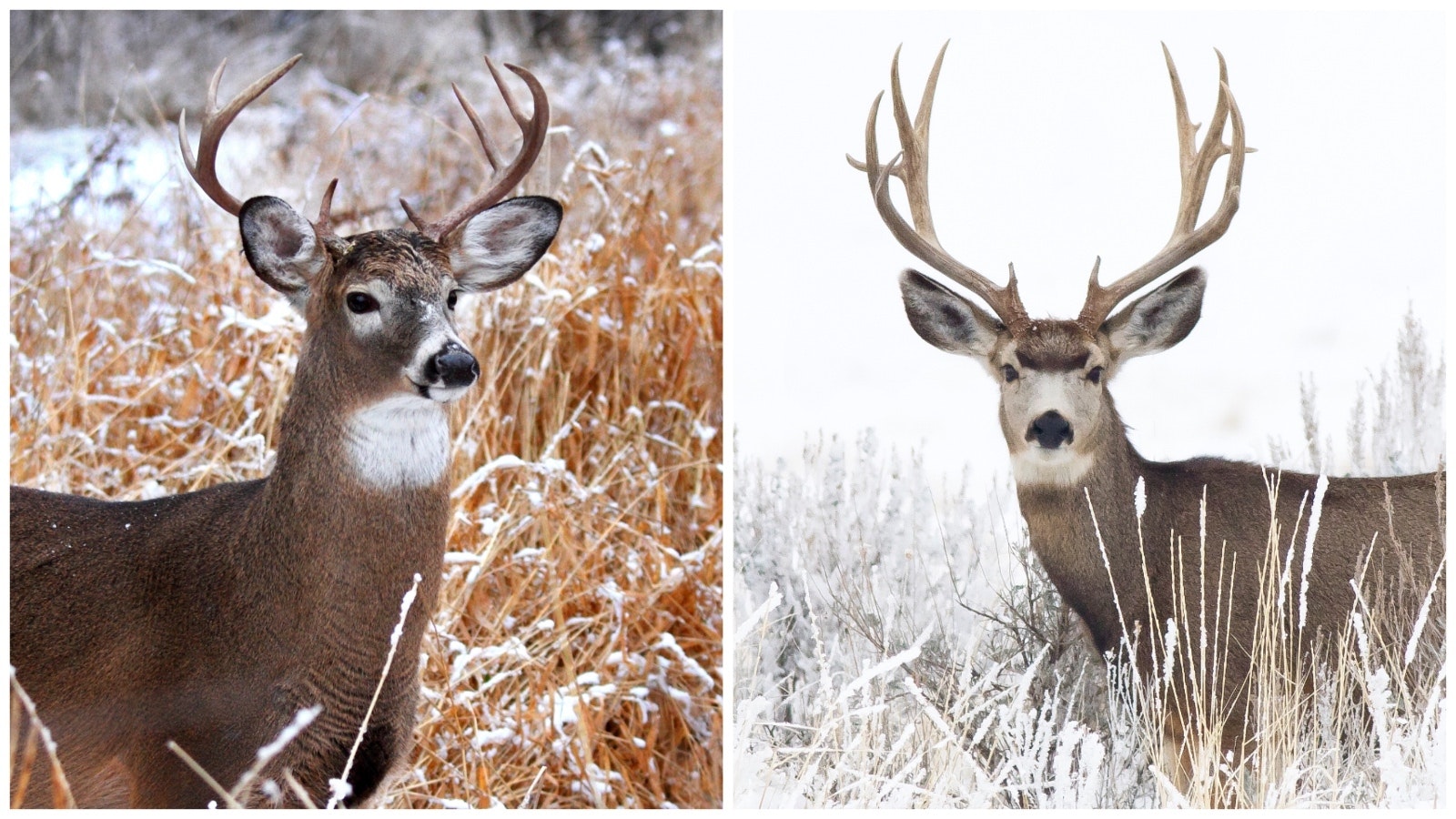Wyoming’s whitetail deer and mule deer are entirely different critters and should be managed and hunted as such, according to a bill before the Wyoming Legislature.
Separating hunting seasons for whitetails and mule deer would be an important step toward helping Wyoming’s struggling mule deer herds, avid hunter and conservationist Josh Coursey told Cowboy State Daily.
“It's been well noted that mule deer populations are struggling and whitetail numbers are growing,” said Coursey, who is president and CEO of the Muley Fanatic Foundation, a mule deer conservation group.
Senate File 111 would create separate hunting tags and seasons for the two deer species. It passed introduction in the Senate on Thursday, and was referred to the Legislature’s Joint Travel, Recreation, Wildlife and Cultural Resources Committee.
SF 111’s primary sponsor is Senate President Sen. Ogden Driskill, R-Devils Tower.
A similar bill failed to gain traction during last year’s legislative session.
Those ‘Other Deer’
Wyoming’s mule deer are highly regarded by resident and nonresident hunters. But the state’s growing numbers of whitetail deer are frequently overlooked, even though many hunters still enjoy pursuing them.
The Wyoming Game and Fish Department currently lumps both deer species together for hunting. There are a few whitetail deer only tags. But many general deer hunting tags are for either species.
Driskill’s family ranch is near Devils Tower in what he previously described to Cowboy State Daily as the “whitetail capital of Wyoming.”
Driskill has long been an advocate for separate hunting seasons and management of whitetails and mule deer by Game and Fish.
He said that he’s watched mule deer numbers shrink around his family’s ranch and the wider Black Hills region, while whitetails have thrived.
Whitetails seem to reproduce faster, with does routinely giving birth to twin fawns, Driskill said.
Coursey echoed concerns about whitetails out-competing mule deer, and said it’s high time for the two species to be managed separately.
“Recognizing that mule deer and whitetail deer are two very different species, I am optimistic that Wyoming will eventually have the tools to manage them as two very different ungulates,” he said. “Behavior, habitat, resistance to drought, diseases, etc. … They are two very different critters.”
Different Deer, Same Tag Prices
Whitetail are generally smaller than mule deer. Big mule deer bucks can weigh 300 pounds or more. The only place whitetail bucks are likely to get that big is in Canada, which is known to produce some real bruisers. A typical whitetail buck is about 150-200 pounds.
Despite being smaller, whitetails, as Driskill noted, tend to have higher reproductive rates. And they can also be more aggressive about pushing mule deer out of shared habitat.
Mule deer can be found in just about every habitat Wyoming has to offer, from prairies and sage flats, to high-mountain alpine areas.
Whitetails are more specialized; they tend to congregate along river bottoms or lowland farm county.
If SF 111 passes the Legislature and is signed into law by Gov. Mark Gordon, that will clear the way for different hunting seasons, but deer tag prices will remain the same, or at current prices, for both species.
The most expensive tags are for the nonresident “special draw.” Nonresident tags are split 60%-40%. The 40% come with greater odds of drawing a tag for the hunter’s desired area, but they’re more expensive.
Under SF 111, a special draw nonresident tag for either deer species would by $826. Other nonresident deer tags would be $372. And resident deer tags — again, for either species — would be $40.
‘Rooted In Science’
Coursey said managing whitetail deer and mule deer separately makes sense, according to wildlife biology.
While once confined mostly to just the Black Hills area, whitetails have been staking out new territory all across Wyoming, he said.
“Today, they’re all across the state. Anywhere you’ve got irrigated farmland, you’ve got whitetails, much to the replacement of what used to be occupied by mule deer,” he said. “Wyoming’s whitetail populations are doing well and provide great table fare. I'd like to see them managed separately by sound science and their biological differences.”
Coursey served on the Wyoming Wildlife Task Force, which also recommended separating out whitetails and mule deer.
“The wildlife task force put forth this recommendation a couple of years ago after a great amount of discussion, testimony and sifting through information rooted in science,” Coursey said.
And so he’d like to see the decision driven by science, not politics this time around.
“Past efforts by some to derail this recommendation with our legislative body have been focused on one's increased opportunities being diminished. This is inaccurate and littered in assumption that ultimately aims to maintain self-serving interests,” Coursey said.
“Our world-class resources deserve world-class science-based management, and no two species right now warrant being managed separately than mule deer and whitetail with their known differences,” he added.
Mark Heinz can be reached at mark@cowboystatedaily.com.





